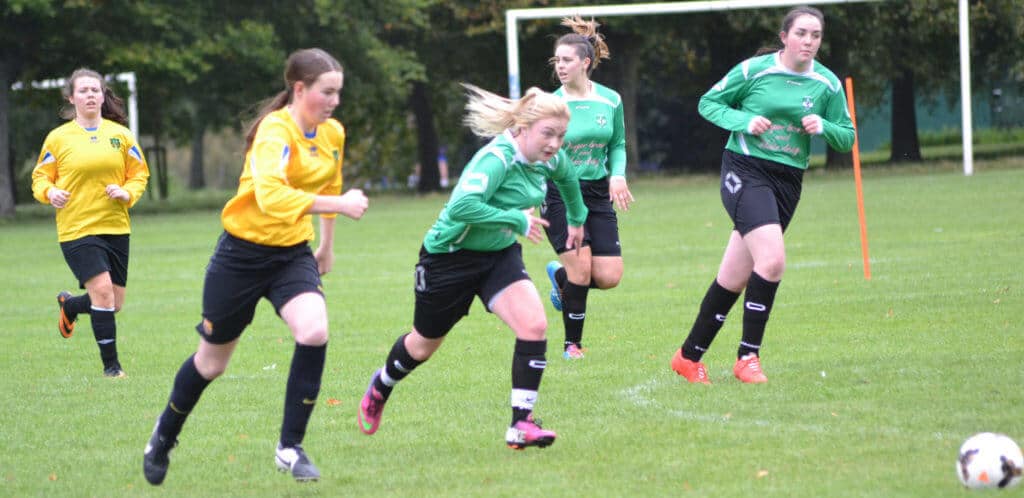
This week Sport England announced their new marketing campaign ‘This Girl Can’ with the goal of encouraging more girls into sport. It intends to celebrate all active women across the UK and show that for women of any age, size, or ability, sport can be a positive experience that enriches their lives. There has been an on-going gender gap until now, with more men involved in sports compared to women, and this national campaign, delivered in partnership with various other organisations, aims to increase the number of female participants in every age group.
Research in the last few years has shown a worrying trend in the negative views many girls have towards their own involvement in sports. A study by the Women’s Sport and Fitness Foundation (WSFF) found that despite the attention that female athletes received during the 2012 Olympics, the success has not translated into the anticipated growth at a grass-roots level. The study noted that although there is a widespread inactivity problem amongst all young people, the issue is especially critical for girls, with only one in ten meeting the official guidelines for physical activity.
An Image Problem
The difficulty is not that girls lack interest in being active and staying healthy, but the type of opportunities available to them and the level of encouragement that they are offered in education. The WSFF study showed that the gap in participation begins in the later years of primary school, and continues to grow throughout secondary school. One reoccurring influence appeared to be the view of young girls regarding what activities were or were not ‘feminine’. Being ‘sporty’ is still classed by many as a masculine trait, and therefore not as valued amongst young women. There is a sense that getting sweaty, dirty, or messy and showing too much of what is perceived as aggressive competitiveness is not attractive. The study noted that many girls felt self-conscious about their appearance whilst exercising, as they felt they were more on show during PE lessons. This was most strongly felt by the least active girls, and added to their lack of confidence. The image problem is further underlined during PE lessons, where many girls report there is too much focus on traditional competitive sport and attention is reserved for the most talented students. This approach means that the majority of girls develop a negative view of sports and physical activity; the very girls who are at the most risk of low activity levels.
Solutions
The primary responsibility of schools in regards to health is that every student leaves with a positive attitude towards being active, having found an activity they want to pursue in adult life, and achieves their full potential. The WSFF research shows there is a desire to be active among these same girls. They argue for a greater choice of activities, for girl-only groups where they are not in sight of the boys, they want to feel comfortable in what they wear, and feel encouraged and rewarded for their efforts despite any natural skill or ability in sports or lack of. There is also a greater emphasis on having fun with friends whilst exercising. Girls tend to be highly motivated by the social aspects of participation and therefore more influenced by the behaviour of their friends. This becomes more significant as they get older, and appears to have an even greater impact on those girls who are the least active. Over half of girls quit sport and other physical activity when their friends do. The disruption of friendship groups during the transition from primary to secondary school therefore has a knock-on effect on participation.
Aside from the above changes desired by students, the WSFF makes several wider scale recommendations that include optimising the School Games competition to inspire young girls (especially at the lower levels), better promoting and utilising schemes such as the Change4Life Primary Schools Clubs to raise awareness among young people of the affects of inactivity, and ensuring sport policy is pro-active in encouraging more inclusiveness within the British sport sector. Women’s sport needs to be better supported and promoted on the same level as men’s sport, in order to change the view that sport is a man’s activity. Most importantly, there needs to be a better understanding of how socio-cultural norms impact the attitudes of young people towards body image and ideas of masculine and feminine identity. The WSFF suggests that the national curriculum include discussion of the relation this has to being active and ‘sporty’.
The fact that girls are clear on the specific issues they face does make it easier to address the problem and consider possible solutions, and hopefully with a united effort from schools, families, the government and media, we will begin to see a positive change take place in the near future.
References
- Sport England. This Girl Can. Available at: https://www.sportengland.org/campaigns-and-our-work/this-girl-can [Accessed 2nd November 2014].
- Women’s Sport and Fitness Foundation. Changing the Game for Girls. Available at: https://www.womeninsport.org/changing-the-game-for-girls-2/ [Accessed 2nd November 2014].
Photo: Shankill FC


Responses